Understanding the NDIS Close Out Audit & Non-Conformances
Navigating the NDIS registration process can be complex. The National Disability Insurance Scheme (NDIS) plays a crucial role in providing funding and connecting individuals with disabilities to essential support services, overseen by the NDIS Commission to ensure quality and safety. To provide services to NDIA managed participants, providers must obtain the necessary certification and registration from the NDIS Commission. For some providers, a Corrective Close-Out Audit becomes a critical step if significant compliance issues are identified during their certification audit with the provider receiving Major Non-conformances. This guide explains what a Corrective Close-Out Audit is, how it works, the risks involved, common pitfalls, and practical steps to manage it successfully.
What is an NDIS Corrective Close-Out Audit?

An NDIS Corrective Close-Out Audit occurs when a provider has major non-conformities identified during their Provisional or Stage 2 Certification Audit. This specific type of NDIS audit is crucial as it allows providers to address significant issues rather than automatically facing registration refusal. The NDIS system permits providers to implement corrective actions and undergo a follow-up audit to demonstrate compliance.
Major non-conformities are serious gaps, such as missing governance systems, lack of participant safeguards, or failure to meet key practice standards. The Close-Out Audit gives providers a second chance to fix these issues and show they meet NDIS Practice Standards.
Corrective Close-Out Audits are an important mechanism to protect participants and ensure that only providers meeting high standards are registered under the NDIS. Treating this process seriously is crucial for any provider aiming to secure or maintain registration.
Where It Fits in the Registration Process
Understanding where the Corrective Close-Out Audit fits into the NDIS registration pathway is important. The initial scope of audit process plays a crucial role in defining the specific types of audits that providers need to undergo for compliance with NDIS regulations. It involves a self-assessment summary that assists both providers and auditors in understanding the requirements needed for a successful audit.

- Stage 1 Audit: Off-site review of policies and procedures.
- Stage 2 Audit: On-site assessment of operational practices. Major non-conformities found here trigger a Corrective Action Plan (CAP).
- Corrective Action Plan: Providers must submit a CAP within 7 calendar days, outlining how they will resolve the issues.
- Close-Out Audit: Within 3 calendar months, a follow-up audit is conducted to verify corrections.
If successful, registration proceeds. Failure to downgrade or close a major non‑conformity within three calendar months shall result in automatic suspension of the certification decision made by the approved quality auditor.
Timeline for a Close-Out Audit
The Corrective Close-Out Audit must occur within a tight timeframe to address risks efficiently:
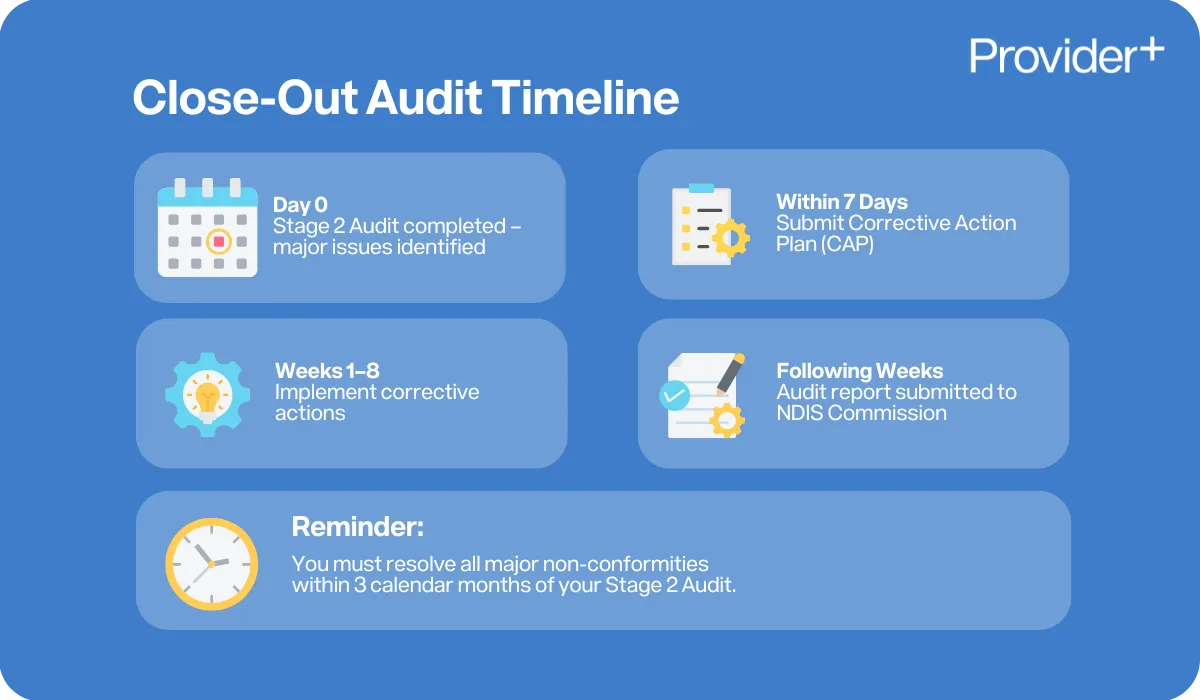
- Day 0: Stage 2 Audit completed; major issues identified.
- Within 7 days: Corrective Action Plan submitted.
- Weeks 1 to 8: Implement corrective actions.
- Weeks 8-12: Close-Out Audit conducted.
- Following Weeks: Audit report submitted to the NDIS Commission for decision.
Providers have a maximum of three months from the date of the Stage 2 audit to fully address and close out major non-conformities.
Common Reasons NDIS Providers Face a Close-Out Audit
Close-Out Audits are often triggered by systemic or significant issues, including:
- Inadequate governance structures.
- Poor risk management processes.
- Template-based, non-customised policies.
- Inconsistent practice compared to documented procedures.
- Insufficient staff training and understanding of key policies.
- Failure to meet module-specific requirements (e.g., Behaviour Support).
- Incomplete complaints and incident management systems in place.
- Notifiable non-conformity (Critical Risks): Serious breaches of legislation that require reporting to relevant authorities. Addressing these non-conformities during audits is crucial for compliance with legal and best-practice standards.
Meeting professional regulation standards, such as those set by AHPRA, is crucial to avoid triggering a Close-Out Audit.
These often reflect systemic weaknesses rather than isolated mistakes.
What Happens During the NDIS Audit Process for a Close-Out Audit?
The Close-Out Audit focuses only on previously identified major non-conformities. The process may involve:

- Desktop Audit: Reviewing new documentation and evidence remotely.
- On-site Verification: Visiting the service location to verify implementation.
- Evidence Submission: Providers must submit updated policies, training records, evidence of operational changes, and other corrective actions.
- Site Visits: Conducting site visits as part of the assessment process for providers offering higher risk or more complex supports. During these visits, auditors review documents and engage with NDIS workers and participants to ensure compliance with necessary standards.
Unlike a Close-Out Audit, a verification audit is a desktop review process tailored for NDIS providers who deliver lower risk or lower complexity supports and services. These providers often meet existing professional regulation standards, and the verification audit ensures compliance with less complex requirements.
Auditors verify that corrections have been properly embedded in daily operations, not just written on paper. Staff understanding and evidence of implementation are crucial.
Passing vs Failing the Close-Out Audit
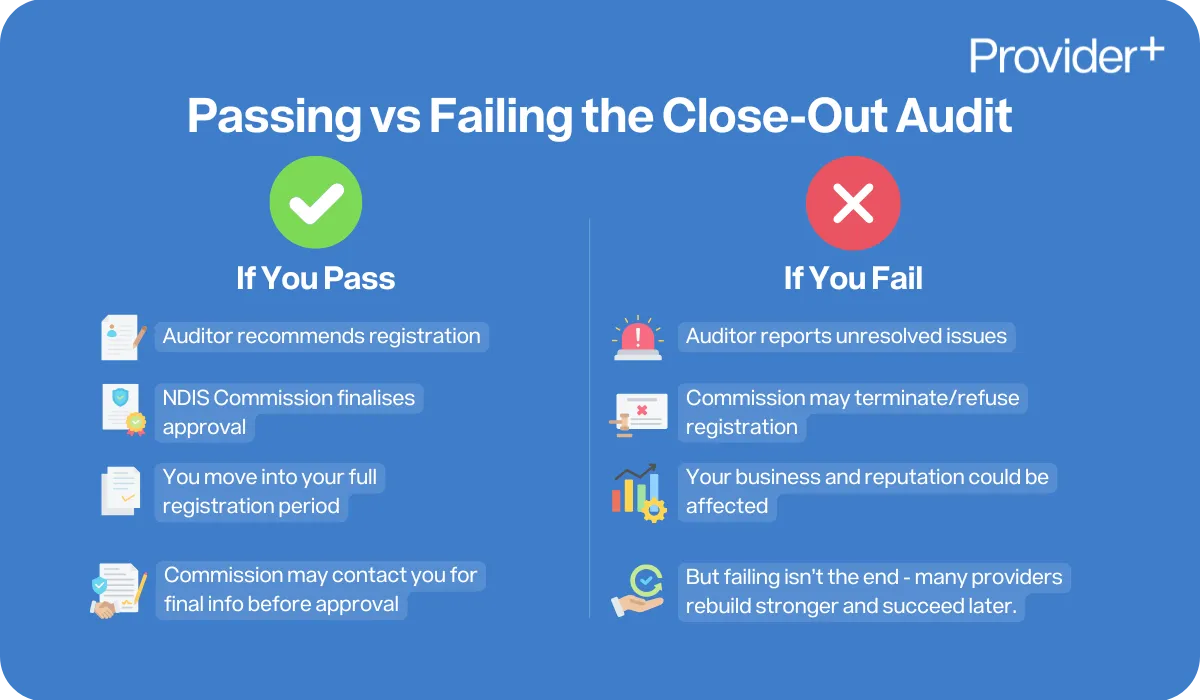
If you pass:
- The auditor recommends registration.
- The NDIS Commission finalises approval.
- Providers continue into their full registration period.
The NDIS Commission's final decision is crucial in the registration process. Once the audit report is received, the Commission will contact applicants regarding any further information needed to assist in making this final decision.
If you fail:
- The auditor reports unresolved major non-conformities.
- The Commission may terminate or refuse registration.
- Business operations and reputation may be significantly impacted.
Failing a Close-Out Audit is serious, but not terminal. Many providers rebuild stronger and achieve registration later with improved systems in place.
How to Prepare for a Close-Out Audit
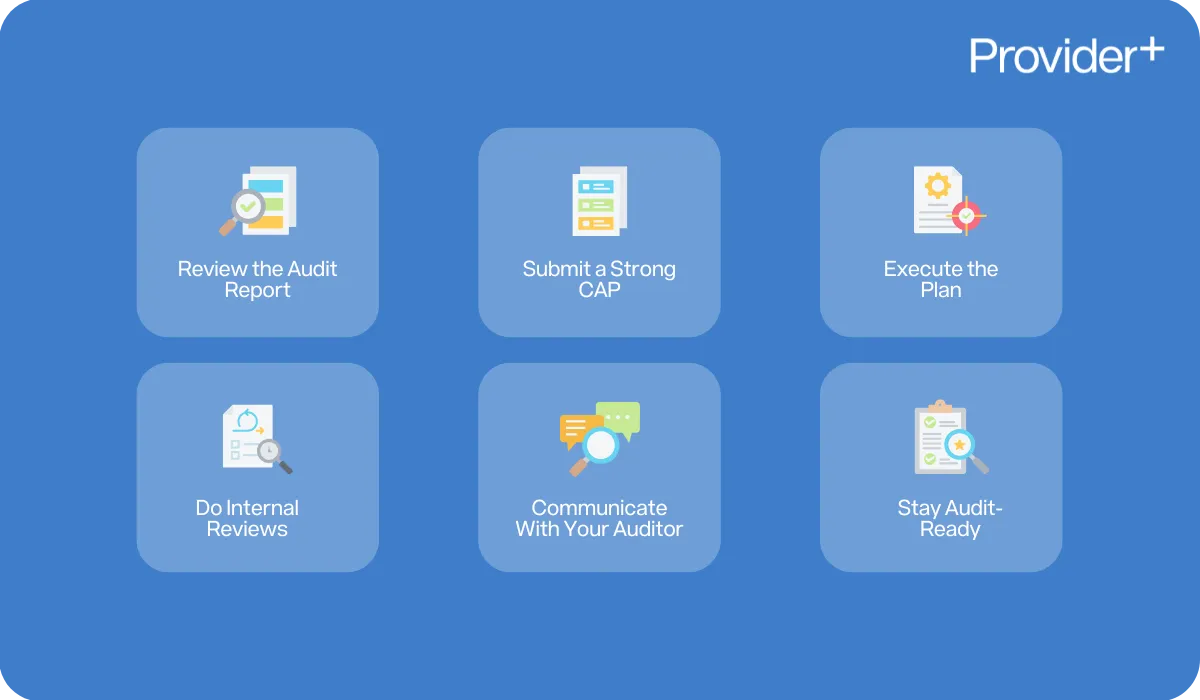
1. Thoroughly Review the Audit Report
- Understand each major non-conformity.
- Clarify requirements with your auditor if needed.
2. Submit a Strong Corrective Action Plan
- Detail specific corrective actions.
- Assign responsibilities and deadlines.
- Describe clear evidence that will demonstrate compliance.
3. Execute the Plan Decisively
- Update and implement policies and procedures.
- Ensure policies are genuinely operationalised.
- Train all staff thoroughly on the new systems.
4. Conduct Internal Reviews and Mock Audits
- Perform internal audits to test compliance.
- Conduct mock interviews and file reviews.
- Complete a self assessment against the NDIS Practice Standards to understand requirements and boost confidence.
5. Maintain Communication with the Auditor
- Clarify expectations for evidence.
- Prepare for potential site verification.
6. Focus on Audit Preparedness
- Implement strategies and tools to ensure compliance.
- Maintain organised records and proper documentation.
- Use software solutions to improve readiness for audits.
Common Pitfalls to Avoid
- Assuming updated documents alone are enough.
- Rushing corrective actions without properly embedding them.
- Incomplete training or lack of staff understanding.
- Poor evidence compilation or submission.
- Underestimating the seriousness of the corrective process.
- Failing to address minor non conformities, which can escalate to major issues if left unresolved.
Close-Out Audits require real and lasting changes, not superficial fixes.
The Importance of Culture Change
Correcting major non-conformities often requires deeper cultural change within an organisation. Providers who succeed recognise that:
- Leadership must drive compliance and quality improvement.
- Staff must be engaged and empowered to implement standards.
- Continuous improvement systems (like regular internal audits) are essential.
Cultural change significantly impacts service delivery, directly influencing the quality and safety of services provided to clients.
Embedding a strong compliance culture reduces the risk of future audit failures and improves service quality for participants.
Why Seeking External Support is Critical
Facing a Corrective Close-Out Audit is time-sensitive and high-pressure. External consultants can help by:
- Conducting expert gap analysis.
- Assisting with rewriting policies and embedding them into practice.
- Preparing compliant evidence bundles.
- Running internal audits and preparing staff for auditor interviews.
An approved quality auditor plays a crucial role in the NDIS audit process, evaluating the operational effectiveness of disability service providers and ensuring they meet the necessary standards and guidelines set by the NDIS Commission.
While registration is free, providers should consider the audit costs associated with hiring approved quality auditors. These costs vary based on the organisation’s size and the number of participants supported, but obtaining quotes from multiple auditors can help manage expenses and ensure a good return on investment.
Consultants bring fresh eyes, expertise, and practical tools to quickly lift an organisation to compliance. Investing in specialist support greatly improves the chances of passing and builds sustainable systems that benefit participants.
What Happens If You Fail and Need to Reapply
If registration is refused, providers must:
- Cease providing supports that require NDIS registration.
- Start the full registration process again, including a new audit.
The results of the initial audit can significantly impact the timing and requirements of the next audit. For instance, providers with minor or major non-conformities may face their next audit sooner than the standard 18 months, depending on the corrective actions taken.
Reapplying successfully requires:
- Comprehensive internal reforms.
- Demonstrable, sustainable changes.
- Strong governance, risk, and quality management systems.
Many providers who fail once return stronger and more compliant. However, failing again can make future registration much more difficult.
Conclusion
An NDIS Corrective Close-Out Audit represents both a risk and an opportunity. It is a second chance to fix critical issues and demonstrate a genuine commitment to quality and participant safety.
Providers who approach the process with urgency, thoroughness, and the right support can emerge stronger and fully compliant. Those who succeed are those who embed lasting improvements into their governance, operations, and culture.
If you are facing a Corrective Close-Out Audit, act now. Seek expert help, review your systems, and commit to building a stronger, more resilient organisation for the future.
Sources:
- NDIS Quality and Safeguards Commission. (2024). NDIS Provider Registration and Audit Requirements. Retrieved from https://www.ndiscommission.gov.au.
- NDIS Practice Standards and Quality Indicators (2023).
- NDIS (Approved Quality Auditors Scheme) Guidelines 2018.
- Team DSC (2024). Common Audit Fails and Lessons Learned.
- Amergin (2024). Responding to Audit Outcomes and Non-Conformities.
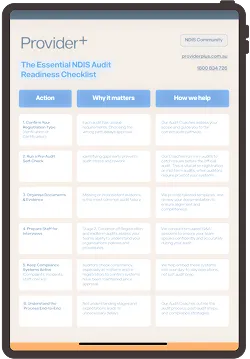
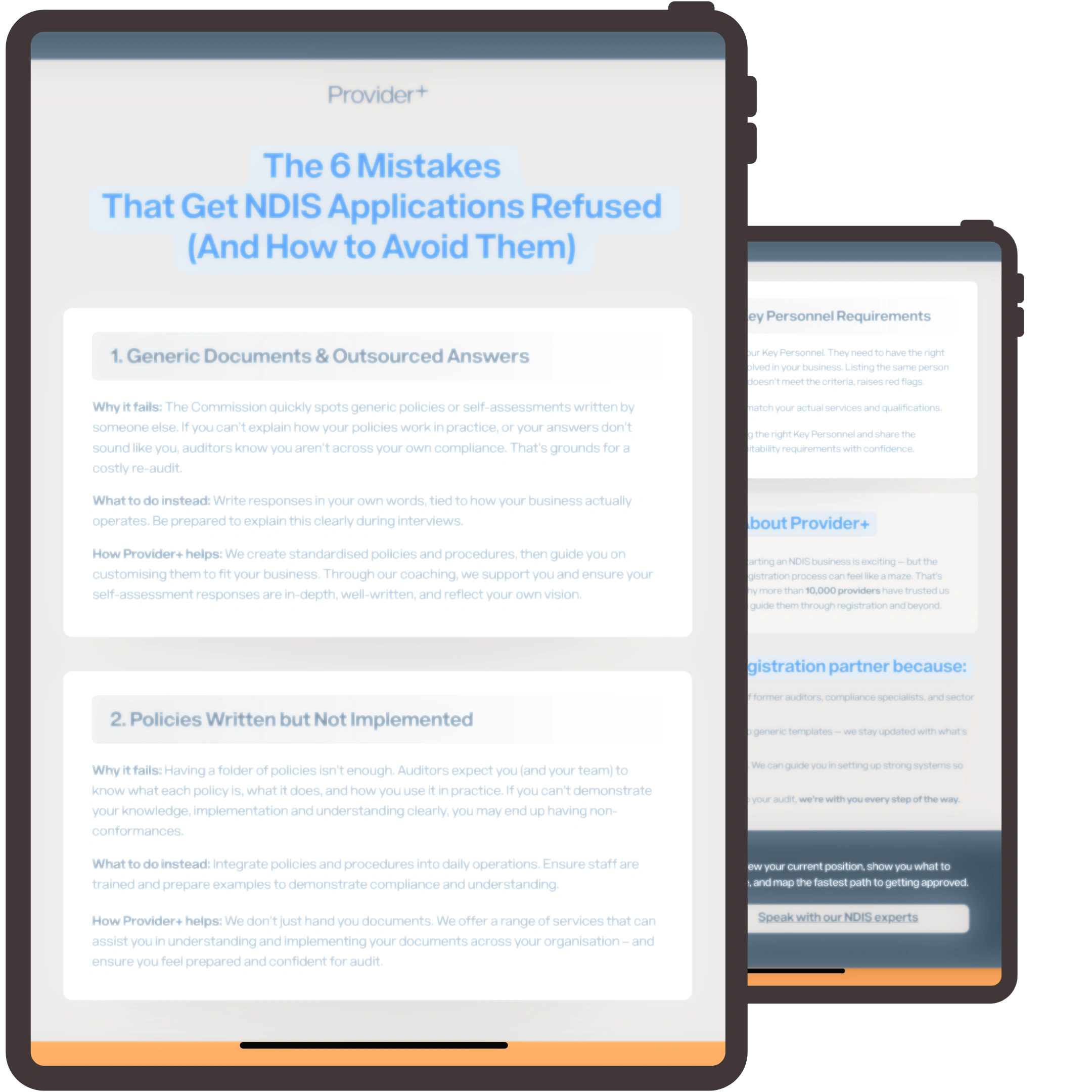
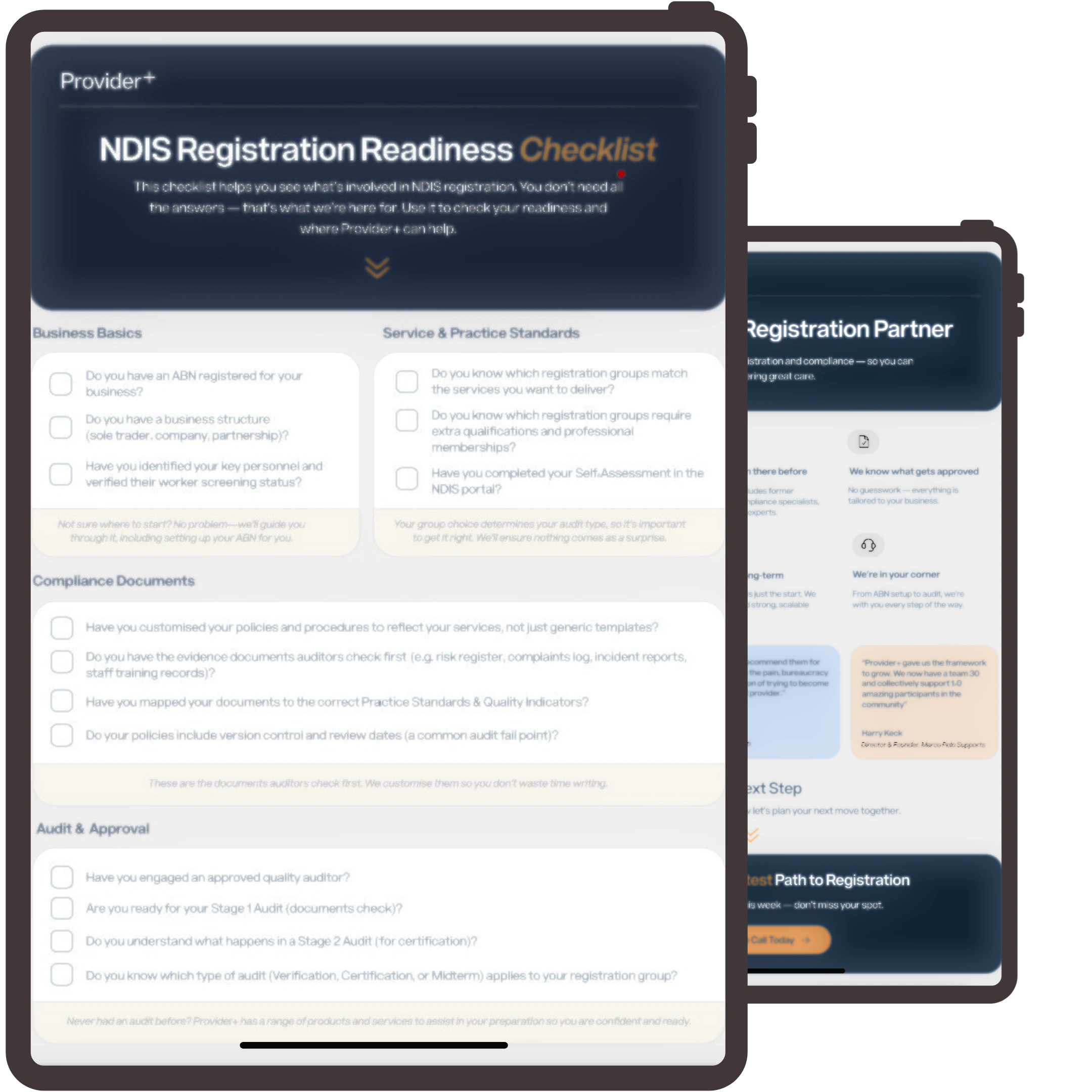

































FAQs
Here is our frequently asked questions.

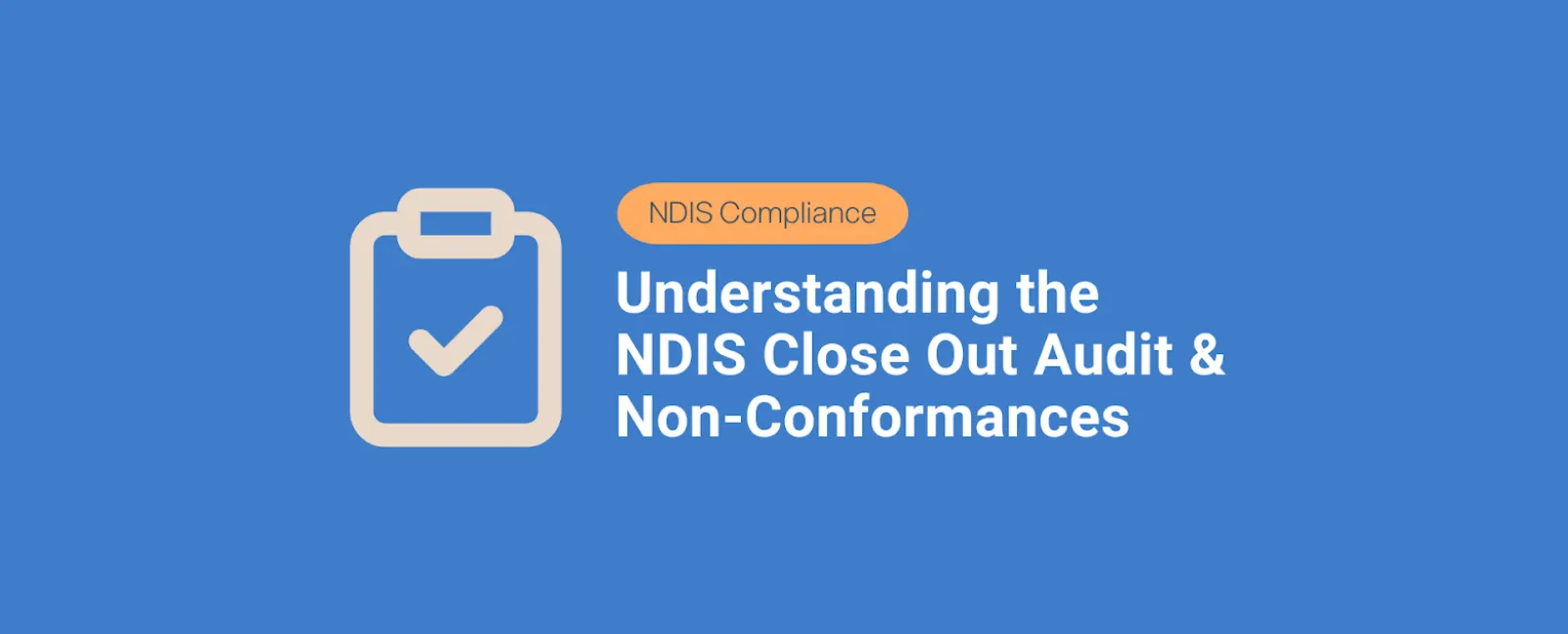
.webp)